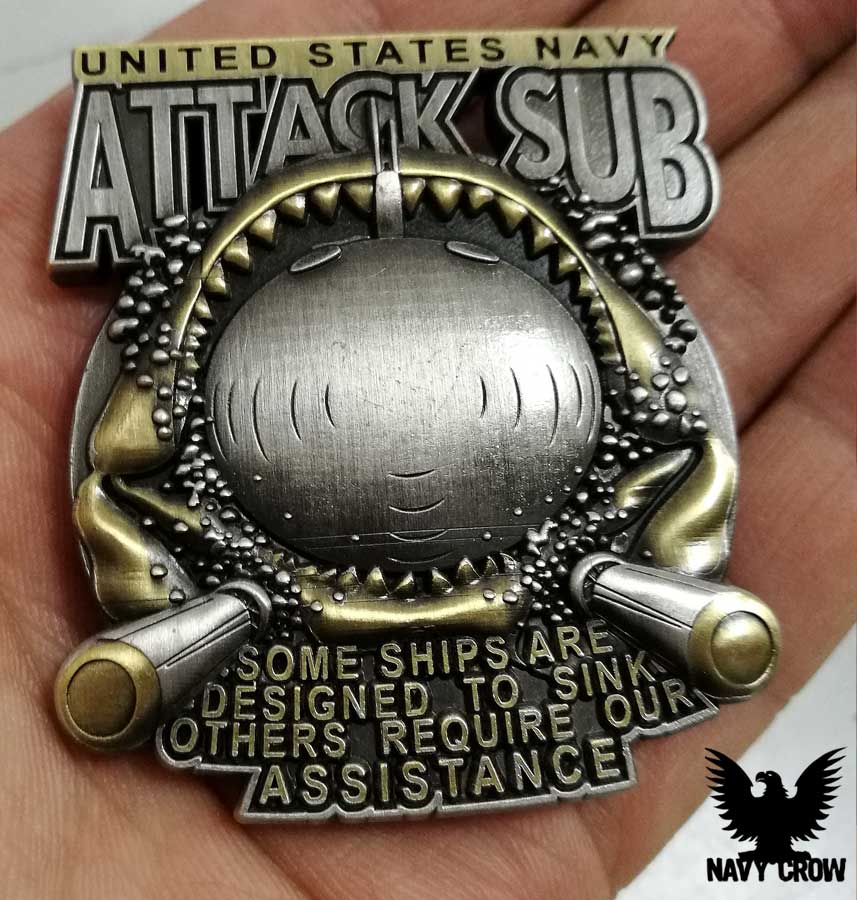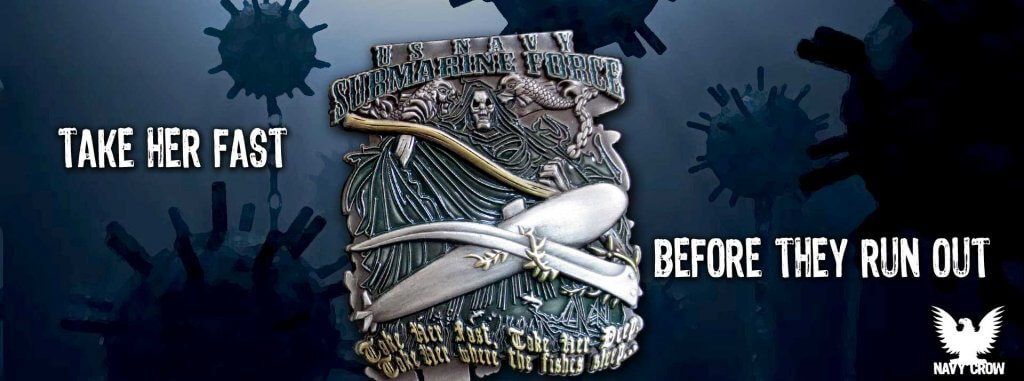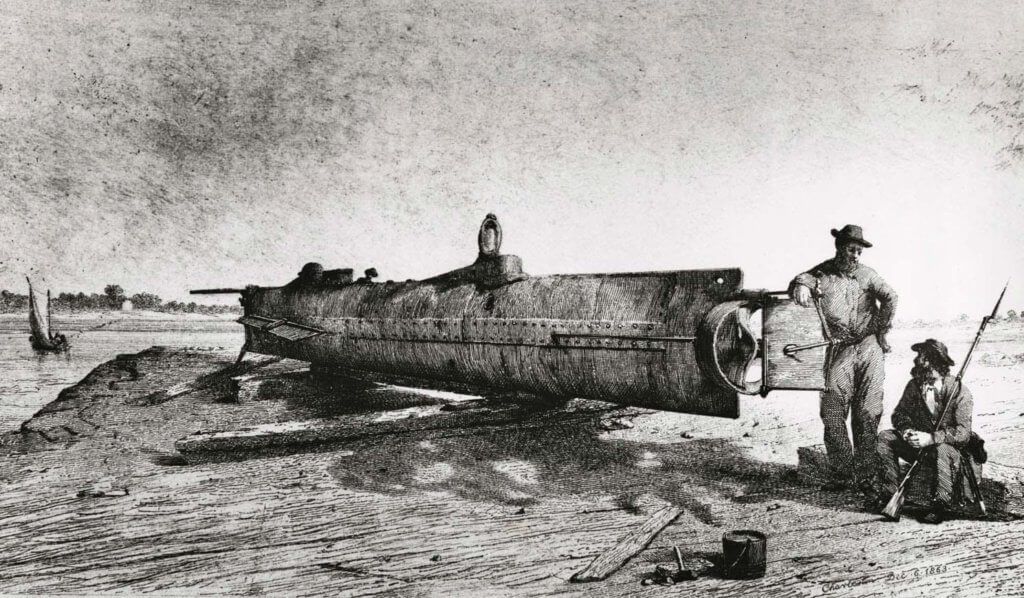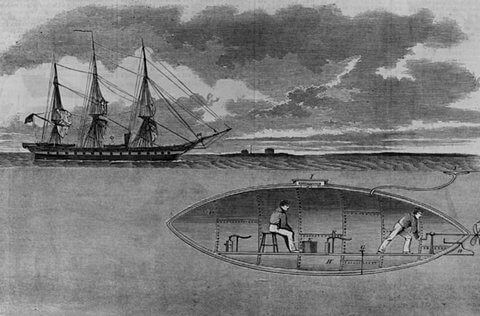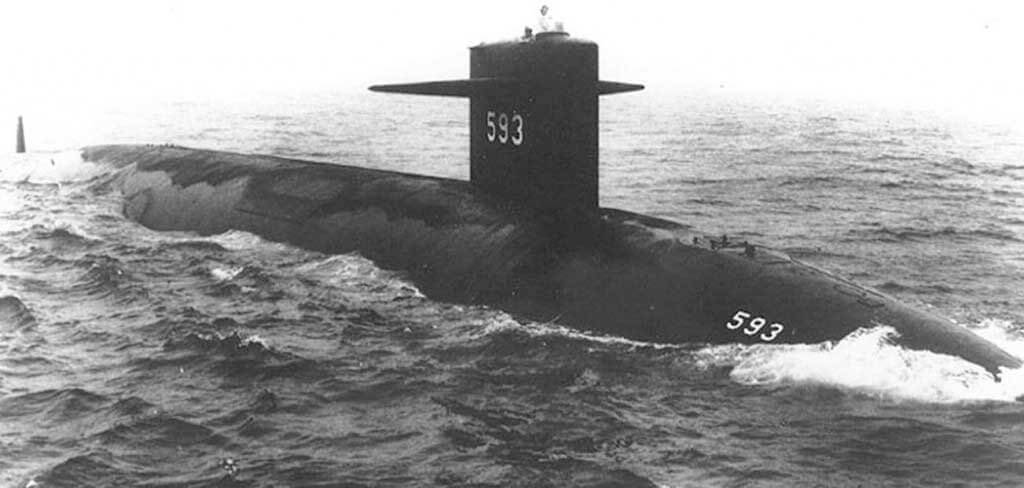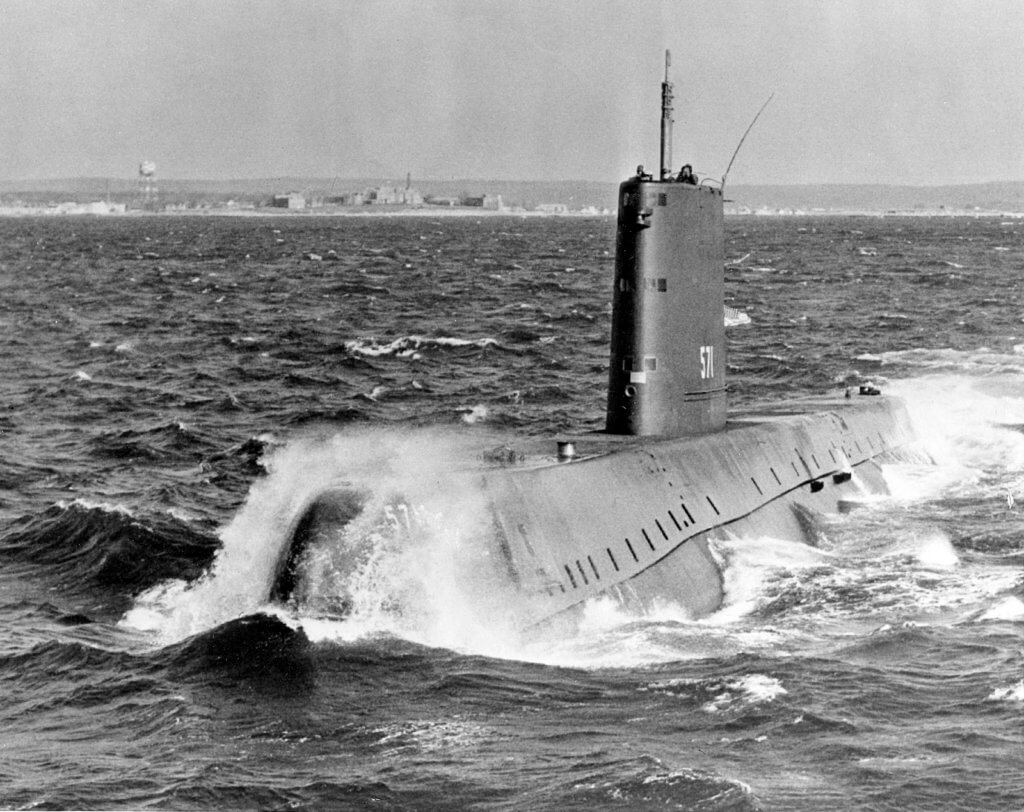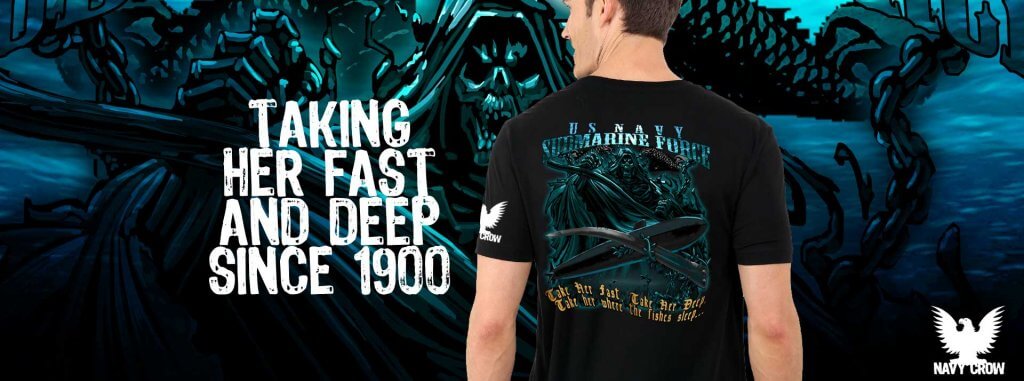THE FIRST SUBS
Submarines, a mainstay of today’s Navy, were under consideration way back in 1776 when David Bushnell built a craft that was perhaps too far ahead of its time. Turtle, as it was called, was submersible, had a screw type propeller, ballast tanks, a depth gauge, self contained propulsion, and torpedo-equipment still found in submarines today. It was designed to sink its target by boring a hole in the hull of an enemy ship and attaching an explosive. However, this craft had difficulty with copper-sheathed hulls. Robert Fulton, famous for developing a steamship, also tested a four-man submarine named Nautilus, which made successful submerged trips but failed to sink any enemy vessels.
CIVIL WAR SUBS
The submarine re-appeared during the Civil War. One so-called submarine, which was not really submersible at all, was the steam-driven David. It was developed by the Confederate Navy and operated with its stack and hatches above the surface of the water. It was not very successful. The Confederate Navy did, however, pioneer the development of submersibles. The most successful one was named for H.L. Hunley, under whose sponsorship it was built. It was propelled by hand cranks, had a screw type propeller and actually submerged, but it did not have means to store fresh air. This submarine however drowned two crews before it sank itself. Hunley torpedoed the U.S. Navy blockader Housatonic on 17 February 1864 with an explosive device at the end of a 15-foot-pole. When the underwater bomb exploded it sank the Union ship, but also sank Hunley, drowning a third and final crew. Housatonic was the first ship to be sunk by a sub in combat.
GASOLINE SUBS
In 1900, the U.S. Navy’s first combustion-electric powered submarine, USS Holland (SS-1) was commissioned. It was 54-feet long, displaced 74 tons while submerged, and had a screw type propeller. She was driven by a gasoline engine while surfaced and batteries while submerged. Holland’s surface speed was about seven knots, and at full throttle she could make about the same while submerged. A diesel engine replaced the gasoline engine in 1912, and the diesel engine and the electric battery remained the power source for submarines until nuclear power was introduced as submarine power.
USS THRESHER
On 9 April 1963 Thresher, now commanded by Lieutenant Commander John Wesley Harvey, got underway from Portsmouth at 8 am and rendezvoused with the submarine rescue ship Skylark at 11 am to begin its initial post-overhaul dive trials, in an area some 190 nmi (220 mi; 350 km) east of Cape Cod, Massachusetts. That afternoon Thresher conducted an initial trim dive test, surfaced and then performed a second dive to half test depth. It remained submerged overnight and re-established underwater communications with Skylark at 6:30 am on 10 April to commence deep-dive trials. Following standard practice, Thresher slowly dived deeper as it traveled in circles under Skylark – to remain within communications distance – pausing every additional 100 feet (30 m) of depth to check the integrity of all systems. As Thresher neared her test depth, Skylark received garbled communications over underwater telephone indicating “… minor difficulties, have positive up-angle, attempting to blow”] and then a final even more garbled message that included the number “900”] When Skylark received no further communication, surface observers gradually realized Thresher had sunk. By mid-afternoon a total of 15 Navy ships were en route to the search area. At 6:30 pm, the Commander Submarine Force Atlantic sent word to Portsmouth Naval Shipyard to begin notifying next-of-kin – starting with Commander Harvey’s wife – that Thresher was “missing.” By morning the next day all hope of finding Thresher was abandoned and at 10:30 am the Chief of Naval Operations went before the press corps at the Pentagon to announce that the submarine was lost with all hands. President John F. Kennedy ordered all flags to be flown at half-mast on 12–15 April in honor of the 129 lost submariners and shipyard personnel.
USS NAUTILUS
In July of 1951, Congress authorized construction of the world’s first nuclear powered submarine. On December 12th of that year, the Navy Department announced that she would be the sixth ship of the fleet to bear the name NAUTILUS. Her keel was laid by President Harry S. Truman at the Electric Boat Shipyard in Groton, Connecticut on June 14, 1952.
After nearly 18 months of construction, NAUTILUS was launched on January 21, 1954 with First Lady Mamie Eisenhower breaking the traditional bottle of champagne across NAUTILUS’ bow as she slid down the ways into the Thames River. Eight months later, on September 30, 1954, NAUTILUS became the first commissioned nuclear powered ship in the United States Navy.
On the morning of January 17, 1955, at 11 am EST, NAUTILUS’ first Commanding Officer, Commander Eugene P. Wilkinson, ordered all lines cast off and signaled the memorable and historic message, “Underway On Nuclear Power.” Over the next several years, NAUTILUS shattered all submerged speed and distance records.
On July 23, 1958, NAUTILUS departed Pearl Harbor, Hawaii under top secret orders to conduct “Operation Sunshine”, the first crossing of the North Pole by a ship. At 11:15 pm on August 3, 1958, NAUTILUS’ second Commanding Officer, Commander William R. Anderson, announced to his crew, “For the world, our country, and the Navy – the North Pole.” With 116 men aboard, NAUTILUS had accomplished the “impossible”, reaching the geographic North Pole – 90 degrees North.




